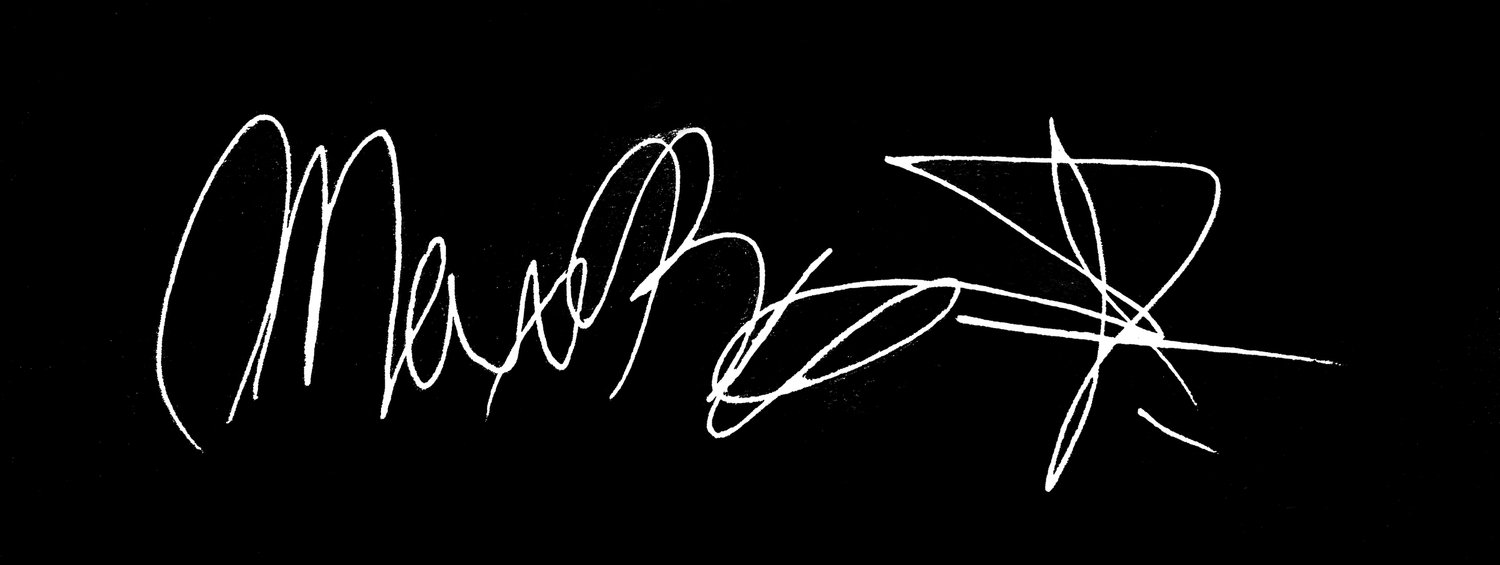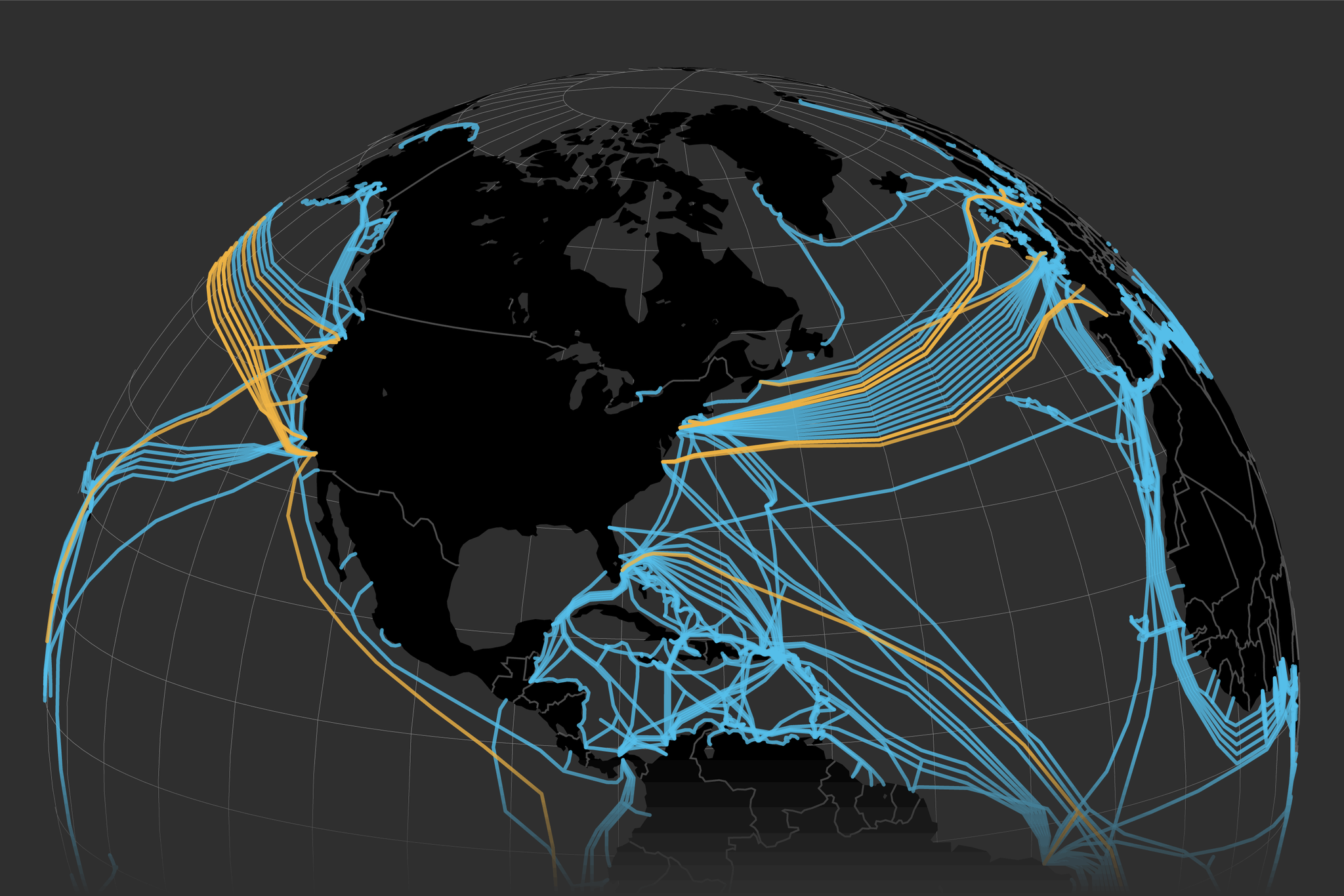breathe (in production)
breathe is an embodied, underwater, XR documentary which explores the internet as a modern-day monument, a virtual nature, an implement of systemic racism, and an alien infrastructure furnishing our world. Utilizing repurposed, emergent technologies, this work investigates the nefarious, unseen actions of tech giants through exploration of their undersea enterprises.
A recent New York Times article entitled, How the Internet Travels Across Oceans, reports that Amazon, Google, Facebook, and Microsoft are running their own fiber optic cables under the ocean, creating discrete internet connections between continents, and notably excluding Africa from all plans. The installation of new cables, independent from the previously shared cables, raises many questions surrounding the future of net neutrality, exclusivity of access to technology and culture, and the subsea commons; or who has the right to colonize these spaces? There are also broader concerns about the ecological impacts of the cables on ocean flora and fauna, legislative short-sightedness about the implications of unregulated technologies, and continued practices of systemic racism. I will explore all of these questions through the production of an underwater, XR (extended reality) documentary entitled breathe. This work aims to expose the nefarious effects of these new infrastructures. I aim to deconstruct the historically patriarchichal field of nature documentaries, by framing the presented texts and aesthetics with principals cultivated from feminism, decolonization, queer futurity, and extinction rebellion, as well as through enacting equity in both research and production. This work will offer insight surrounding the impact of the installation of subsea cables onto our culture, ecology, economy, technology, history, and geography. The output of this project will result in 1: an embodied, XR documentary experienced as an art installation 2: an installation of documents, interviews, and mediated contents collected through the research process, and 3. a performance lecture on my findings.
I am developing emergent media tools, practices, and vernaculars in service to a production that fosters more deeply embodied experiences. I believe that our ubiquitous cultural desires for “immersive experiences,” are catalyzed by our increasingly disembodied existences. As this project intersects with my interest in SCUBA diving, I am imagining a work which promotes awareness of respiration and resistance by using full-bodied, haptic sensors. Using 360 video, gaming technologies, ambisonic sound, and storytelling, this work will offer a physical experience of diving under the ocean as a way to explore the unseen actions of our world’s largest tech companies.
Proof of concept prototype for scuba regulator/bre controls for a game engine.
Learning Deep (in production)
In collaboration with engineer Neil Franks, and with a major programming leg up from cntl shift face, we now have a deep fake, which has learned to speak like Sir David Attenborough. I introduce to you david.attenbot. This project began as an attempt to gain better access and understanding into the current landscape of artificial intelligence technologies, which have largely only been utilized by corporate industries, and the department of defense. These institutions have created cultures of practice around the use of artificial intelligence tools, which largely neglects its significant potentials, as targeted advertising and smart weapons have captured their hearts and minds. The filmmaker in me is always searching for cinematic potentials in new tools, and the opaque use and culture around artificial intelligence made it ripe for my curiosity. Concurrently, my orientation as a trans women is always seeking ways in which, new technologies or cultures of practice can serve and improve the visibility of marginalized perspectives, and identities. The third leg of this table comes from my experience as a scuba diver, and my relationship with the sea as an immense space of futurity.
Through my exploration of these tools and practices, I began to recognize parallels between the way mainstream cultures represent and discuss deepfakes, as well as notions of passing, which has a history in race and class, but in my case is oriented towards my gender expression. In both cases, deepfakes and passing are measured on a spectrum of authenticity and deception. A spectrum, which was fabricated by heteronormative media institutions, who’s centered privilege has created a gate keeping around notions of authenticity of identities. The reality is that queer, and other marginalized bodies, are policed to operate inside of injurious terms, where if you are someone who wishes to pass and you happen to succeed, you are still at risk of being found out, and punished as a deceiver. If you are a visibly queer body, and don’t “pass,” whether by intention or not, you are also at risk of harm for the discomfort you cause within heteronormative spaces.
This brings me to the world of deep fakes. Deep fakes are shrouded in controversy, due to their seemingly nefarious intentions to deceive and create false realities. This perspective comes from demographics who perhaps have credibility to lose. I am interested in the use of deepfakes for good, and what they can do for the democratization and propagation of marginalized narratives. It is my experience that a voice like that of Sir David is oddly oriented towards being credible and trustworthy identity by default. I believe that the work David Attenborough has contributed to the global understanding of the natural world is both profound and important, and it also got me to thinking about what credibility his voice could lend to the queer natures and cultures, which are so often underrepresented or misrepresented by heteronormative media industries, whose institutions are often built on undeserved or unearned credibility. What does it mean for the voice of Sir David Attenborough to narrate the experience of a transgender woman? Does that mean that my experiences, my presentation, and my story are eligible to be bestowed with the heft and acclaim of other much-loved BBC productions?
Chapter 1 of 8, rough cut.
Cyborg Cinema: Embodied Practices for Artificial Intelligence, Virtual & Other Extended Realities (Book in progress, being published by Routledge)
This book brings the humanity back to the study, understanding and application of making cinematic experiences with virtual reality, artificial intelligence, game engines, and extended reality. This text will cover methods created and tested in a course entitled Performing in the Virtual, developed and co-taught by myself and Robert Farid Karimi at Arizona State University. We wish to examine the parallels our present moment have to early film history, and how that history can inform new cultures of practice that allow us to produce new modes of storytelling, immersive experience, and world-building with emergent tools.Based in the framework that for its entire history, cinema has always been a body-based experience, and this experience is ultimately an extension of a series of body-based practices. Our bodies have ultimately functioned as the primary medium and vessel of cinematic output.
CC will explore this framework through historical examples: Henri Bergon’s matter and memory, Muybridge’s and Marey’s experiments in capturing bodies in motion, the concatenation of eroticism as an innovator in film and media industries and the abstract choreographies of today’s steadicam operators. CC will engage readers with countless tools and technologies, which are both responsive to our behaviors and activities, as well as increasingly intelligent in their capabilities. New technologies including virtual reality, artificial intelligence, game engines, haptic devices, IOT, network tools, motion capture, ambisonics, 360 video, and more are further enabling opportunities to integrate the body into cinematic productions and experiences. CC will differentiate itself from other books on the subject matter because it will not center the spectacle and potentials of the tools through an attenuated unpacking of their operative abilities. Instead, CG/PTV will operate as a manual for future teachers and those wishing to delve deeper into how to apply the tools to take on the questions a large interdisciplinary group of artists want to tackle with these tools.
CC will be a practical guide to understanding, participating, and pioneering in this new age of cinematic possibility through centering the body as a primary input and output of the process. To ask the question, “who are the tools for, and what exactly are they serving?” We wish to demonstrate how emergent technologies can best serve, produce, and design for bodies, and how these practices can inform the cultures of emergent film production to allow us to move beyond the fundamental spectacle of the tools.
The Space Between Sea and Land (in production)
Written, Directed, Designed, and Composed by Max Bernstein. Performers include James Allister Sprang, Asia Gagnon, Tomas Constantine Moore, and Max Bernstein. The Space Between Sea and Land is a multifaceted work, which utilizes dynamic video projection mapping, a 3D pop-up book style set, immersive sound design, and a precise and rigorous movement vocabulary that allows performers to enact my original text and musical score. This work has been supported by Squeaky Wheel Media Arts Center and the New York State Council for the Arts.





